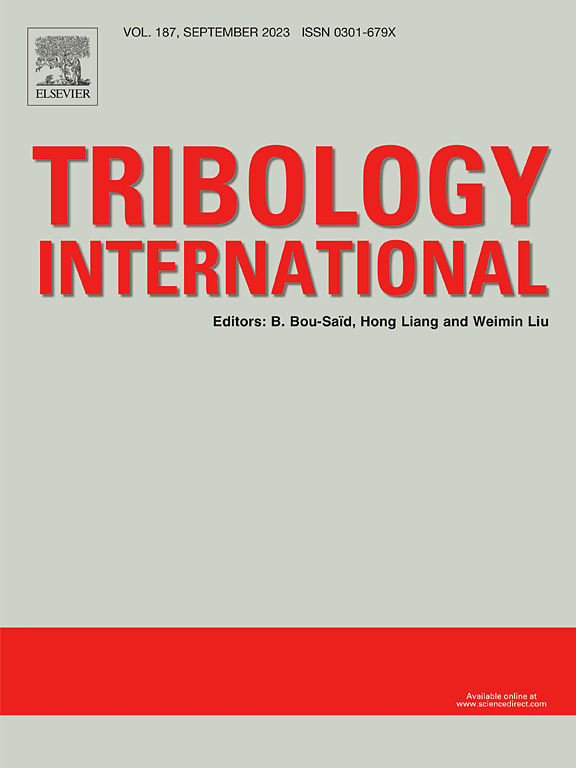Experimental and simulation study of bio-inspired adaptive transverse wave microgrooves for underwater drag reduction
IF 6.1
1区 工程技术
Q1 ENGINEERING, MECHANICAL
引用次数: 0
Abstract
Inspired by the flexible skin of dolphins and the hydrophobic effect of lotus leaves, this study developed an adaptive drag reduction surface using biomimetic structures. The design combines a transverse groove base with hydrophobic flexible materials, employing hydraulic actuation for active surface morphing. This approach effectively integrates non-smooth structures, flexible surfaces, and hydrophobic drag reduction technologies, achieving up to 28 % drag reduction at a flow velocity of 0.2 m/s. This adaptive technology offers a robust solution for drag reduction across varying flow velocities in complex underwater environments.
求助全文
约1分钟内获得全文
求助全文
来源期刊

Tribology International
工程技术-工程:机械
CiteScore
10.10
自引率
16.10%
发文量
627
审稿时长
35 days
期刊介绍:
Tribology is the science of rubbing surfaces and contributes to every facet of our everyday life, from live cell friction to engine lubrication and seismology. As such tribology is truly multidisciplinary and this extraordinary breadth of scientific interest is reflected in the scope of Tribology International.
Tribology International seeks to publish original research papers of the highest scientific quality to provide an archival resource for scientists from all backgrounds. Written contributions are invited reporting experimental and modelling studies both in established areas of tribology and emerging fields. Scientific topics include the physics or chemistry of tribo-surfaces, bio-tribology, surface engineering and materials, contact mechanics, nano-tribology, lubricants and hydrodynamic lubrication.
 求助内容:
求助内容: 应助结果提醒方式:
应助结果提醒方式:


